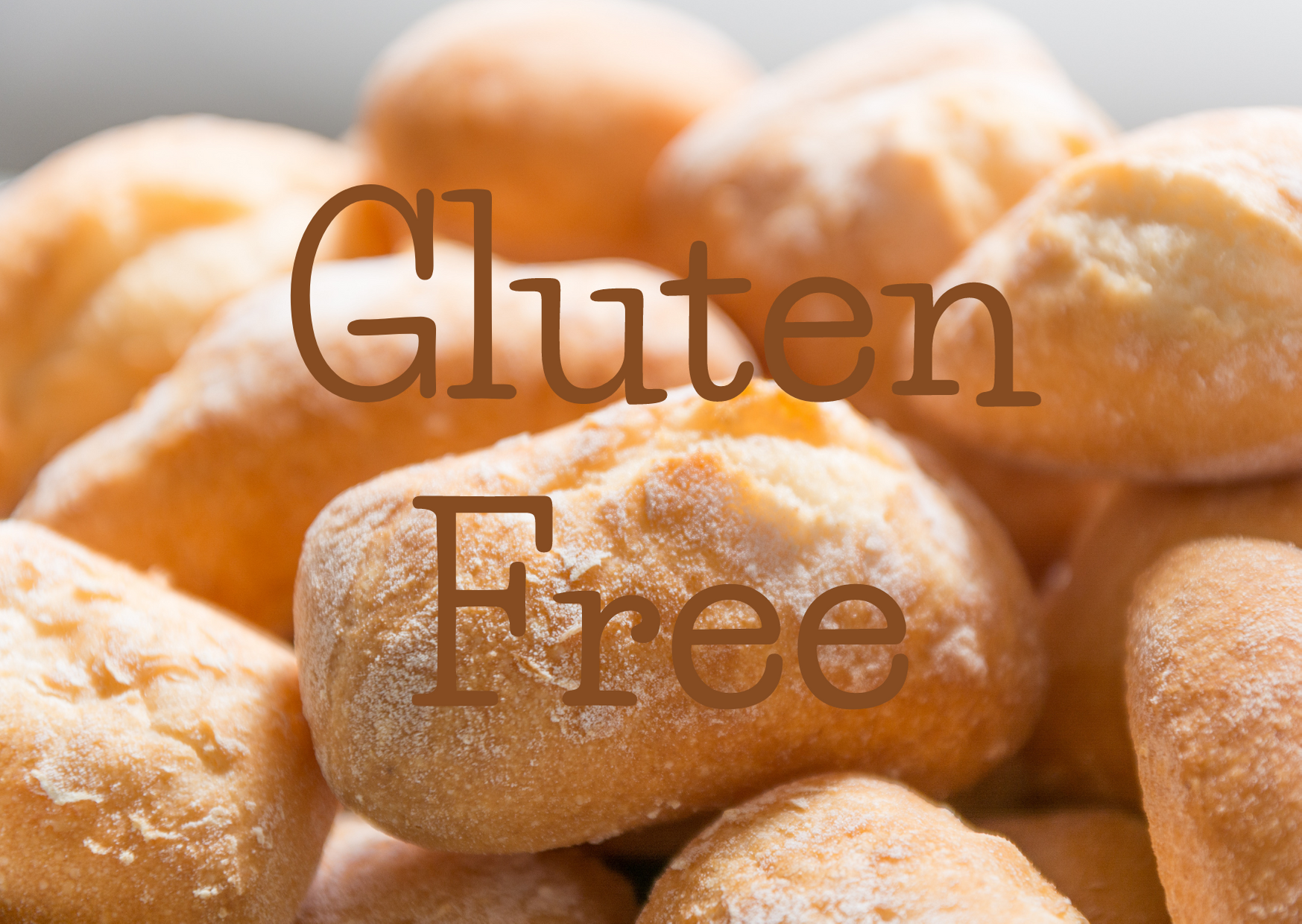Coeliac Disease or Gluten Intolerant? What’s the difference?

Being diagnosed with Coeliac Disease can be an incredibly daunting experience, as I well know after being diagnosed in January 2018. Coeliac Disease affects 1 in 100 of the UK population yet only 30% of those affected in the UK have been diagnosed. This leaves an estimated 500,000 undiagnosed. Around 6% to 8% of the population choose a gluten free diet and are classed as having non coeliac gluten sensitivity. (The Guardian 7th Aug 2018).
But what is the difference? This is a question I get asked a lot and as someone who has Coeliac Disease it can be quite frustrating to be compared with a gluten intolerance or even with someone who just chooses not to eat gluten.
So the facts:
Firstly, gluten is a protein found naturally in wheat, barley, and rye. People with Coeliac Disease are also told to avoid Oats. The easy way to remember these foods is the acronym BROW. Oats do not contain gluten but are usually grown and processed with wheat so are contaminated hence why people with Coeliac Disease needing to eat ‘gluten free’ oats. These oats are normal oats but grown and processed separately to wheat so they aren’t contaminated with gluten. However some people with Coeliac Disease find they can’t eat gluten free oats either, as the protein in oats, Avenin, is very similar to gluten and some individual’s immune system can’t recognise the difference.
Coeliac Disease is an auto immune disease. This basically means when someone with the disease eats gluten their immune system identifies the protein as an invader or something dangerous to the body that doesn’t belong there. The immune system will then go into ‘attack’ mode and tries to destroy the gluten, but in turn damages the lining of the gut. The lining of the gut has tiny little projections known as villi. When they are working normally villi stand erect and absorb nutrients in the intestine. They help to maximise the surface of the gut and are filled with blood vessels for efficient absorption of nutrients in the food being digested. When the immune system attacks the lining, the villi are damaged and flattened and can no longer absorb the nutrients efficiently.
The Symptoms of Coeliac Disease
The lack of nutrients being absorbed can then lead to many problems all around the body as every part needs vitamins and minerals to function correctly. This is why Coeliac Disease can be so hard to diagnose as there are over 300 symptoms associated with it, which can easily be diagnosed as another condition. Some of the common symptoms are diarrhoea, constipation, flatulence, weight loss (though not all the time), nausea, vomiting and fatigue. Unfortunately these are all common symptoms of other conditions and quite regularly can be diagnosed as IBS (Irritable Bowel Disease). In my case the symptoms presented as a sudden loss of weight, diarrhoea every day for 6 months and complete fatigue. However these symptoms were disguised by the fact I had gone on a strict diet, started to do lots of exercise and I had an incredibly stressful job which explained it all as far as I was concerned. I had actually gone to see my doctor about a pain in my side but he picked up on these other symptoms too with some routine questions and decided to get me tested. The pain in my side eventually turned out to be something completely unrelated, but in this case I can only be thankful that the doctor decided it was a symptom of Coeliac Disease along with the other symptoms.
A big issue with Coeliac Disease is sometimes there are no obvious symptoms at all and someone with the disease can be eating gluten and not know it is an issue. These people are known as ‘Silent Coeliacs’. I myself don’t always have symptoms when I eat gluten so the obvious question I get is…. So why does it matter if you eat it or not? The answer to that is: although there may not be any symptoms on the surface such as diarrhoea, constipation etc. your immune system can be doing a lot of damage in the background as you aren’t receiving the nutrients your body needs. This can then lead to long term issues such as neurological problems, for example, Ataxia and Neuropathy to name a few.
The Tests
If your doctor agrees to a test for Coeliac Disease, the first is usually a blood test to see what your tTG levels are. These are anti bodies that your body will produce to fight gluten if you have the disease. Normal levels vary from lab to lab, depending on the test used, but in my particular case a normal reading is 10 or below. My test showed 135 which indicated I had Coeliac Disease and I was then put forward for the next test to find out definitively whether I had the disease.
The next stage is an endoscopy with biopsies. An endoscopy is when a camera is pushed down your throat and oesophagus into your large intestine to visually see if the villi are damaged and 6 biopsies are taken from different places so the cells can be tested for damage. For this to work you must carry on eating gluten otherwise the findings will not be conclusive. For people who have already given up gluten this is known as the ‘6 week gluten challenge’ and can be an awful time for anyone who has a really intense reaction to gluten.
If the endoscopy comes back positive you are then officially diagnosed with Coeliac Disease. However there are exceptions, especially with children and the elderly where the blood test alone is considered conclusive as the endoscopy can be too traumatic. There are currently different researches being done to try and develop a better diagnostic system that isn’t so intrusive.
Once diagnosed you should then be put forward for a bone scan to ensure you are not suffering from osteoporosis as a calcium deficiency is very common in people with Coeliac Disease, due to malabsorption. You should also see your consultant once a year and after the first 6 months get a tTg test again to see what your levels are like and then once a year. In my case after 6 months of being strictly gluten free my levels went from 135 to 7.
The Remedy (Good News)
To date there is no cure for Coeliac Disease and the only solution at the moment is to follow a strict gluten free diet and, unless there are developments in treatments or cures, this is a lifelong diet. However, despite the adjustments and the effects this can have on your lifestyle, the good news here is that there is no medical intervention. This means there are no invasive measures required for you to heal and as many medications can come with side effects a gluten free diet seems like a good choice. This is a perfect time to look at your diet and make really good healthy choices that will improve your gut and overall health in the long term.
Why do you Develop Coeliac Disease?
People who develop Coeliac Disease are born with the (HLA) Human Leukocyte Antigen gene passed down by a parent. However it is believed 40% of the population of the UK has the gene but only 1% will develop the disease. Siblings of a person with Coeliac Disease have 10% chance of developing it. It’s not known for sure why one will develop the disease but it is believed it is triggered by an event, this can be anything from, pregnancy, a car accident, stress, etc. There is also a theory suggesting it is triggered by poor food such as cheap pasta or by glyphosates which are sprayed onto wheat and other crops as pesticides.
It is not yet known the correlation between how much gluten needs to be ingested and the damage it can cause. As this is unknown, the blanket or safest advice given to someone with Coeliac Disease is to avoid any trace of gluten at all. The legal recommendation is 20ppm (parts per million) in the UK for something to be regarded as gluten free; this varies in different countries such as Australia where the legal recommendation is 3ppm. This means that with Coeliac Disease there can be no cross contamination of gluten free foods or NGI’s (Non Gluten Ingredients – or naturally gluten free food) with any kind of gluten. This means we shouldn’t share kitchen utensils and we shouldn’t share food with people who eat gluten, in case they have gluten on their fingers and transfer it to the food you are sharing.
For me this is the most difficult part of having the disease.
In reality it means going out for a meal can be incredibly daunting as it involves asking the waiters and kitchen staff a lot of questions about how the food is prepared, is it separate from gluten food? Do the kitchen staff wash their hands before handling gluten free food? Are different utensils used, etc.? Also, when the food is delivered to your table, you have to ensure you don’t share it with your friends who are eating gluten. This can cause a myriad of problems (perceived or otherwise) of isolation, that the food may be contaminated and, if you are so inclined, feeling like a nuisance. In my experience, by researching places before you go away, using the many online groups and apps that can help with the decision making, you can find really good places to eat out.
Gluten Intolerance or Non Coeliac Gluten intolerance
As the name suggests people can have an intolerance to gluten but not have Coeliac Disease. Intolerances can develop at any age, but can also go away, so it is not necessarily a lifelong condition. Intolerances to food do not involve the immune system and is not an immune reaction. This is good news, as it means the body is not being attacked by the immune system and damage to different parts of the body is not occurring.
Symptoms
The symptoms of gluten intolerance are similar to Coeliac Disease with various reactions such as constipation, diarrhoea, nausea and vomiting to name a few. One of the marked differences is that someone with Coeliac Disease may get no reaction at all, but damage can still be done somewhere in the body long term. If one is intolerant, they may still be able to eat a substantial amount of gluten before they get a reaction so don’t necessarily need a strict gluten free diet. This will depend on the individual though, as everyone’s reactions will be different. Some people with an intolerance will get such severe reactions when eating a minute amount of gluten that they follow a strict gluten free diet as though they have Coeliac Disease.
Diagnosis
There are no official tests for finding out if one has an intolerance, so the easiest ways are:
Food Diary – Make a note of what you eat and any reactions you get and this may help to identify whether gluten is causing the symptoms
Gluten Elimination Diet– Eliminating gluten from your diet and slowly re introducing it until you get a reaction. This way you will know how much gluten you can tolerate, although this can change over time. (I would not recommend eliminating food groups without first discussing this with your doctor or a health professional such as a dietitian or nutritionist).
The Remedy
If you do have a gluten intolerance the only way to remedy this is adjusting your diet to the levels of gluten you can tolerate. Again the good news here is there is no medical intervention and with some careful planning you can adjust to this new change and use the opportunity to make some great life style changes.
Hopefully this article has helped to establish the differences between Gluten Intolerance and Coeliac Disease. The one thing I would really like to highlight is the importance of knowing whether you DO have Coeliac Disease by arranging to be tested through your doctor. As I have detailed, the ramifications of having Coeliac Disease and not following a strict gluten free diet can lead to serious complications and by being diagnosed you will then have access to tests and being assigned a specialist to check your progress.
Whatever your journey on the gluten free path, here is to a new healthier you!

